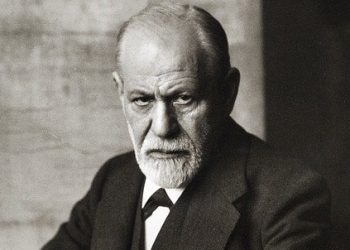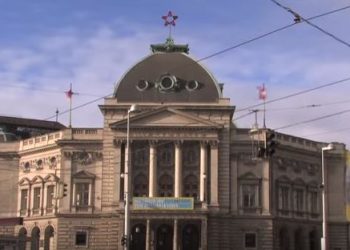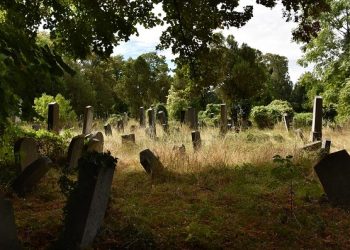The Story of the Founding of the Vienna Museum of Military History
The building of the Museum of Military History was constructed as part of a complex of buildings known as the Arsenal, which was intended to be a place for storing weapons and housing soldiers.
The museum was built according to the plans of the famous architect Theophil Hansen between 1850 and 1856, making it the first Viennese museum. The museum building is exceptional in the local landscape; it is a structure that wonderfully combines Byzantine, Hispano-Moorish, and Neo-Gothic design. The museum’s rooms are adorned with impressive ceiling paintings depicting famous battles. Several statues of the empire’s rulers and important military commanders from its history are scattered throughout the museum.
After the museum’s construction was completed, it turned out that no one really knew what to display inside. The building was impressive enough to be an object of appreciation in its own right, and in addition, the emperors’ collection of weapons was too large for the space allocated to it within the building. After much deliberation, it was decided that the museum would display historical military elements concerning all the inhabitants of the empire. It took many years after the building’s construction until it opened to the public in 1891, featuring impressive and highly diverse exhibits.
With the outbreak of World War I, the museum was closed to visitors and only reopened a few years later in 1921. The museum’s collections were expanded and impressive paintings related to the army and war were added.
After the annexation of Austria to Nazi Germany in 1938, the museum became an exhibition space for the various operations that took place during the war. Most of the museum’s collections were moved to hiding places and thus were saved from the numerous bombings of the city. These bombings destroyed part of the museum building, and it took several years to renovate it and restore it, to some extent, to its original glory.
The Exhibitions in the Museum
The museum is divided into 5 areas and deals with the history of the Austrian Empire under the rule of the Habsburgs from the end of the 16th century until its final fall in 1918. In addition, a significant part of the museum also focuses on the years of World War II and Nazism from 1938 to 1945. The museum has many exhibits that present the world of war from various aspects such as technology, science, art, and more. You can see a variety of military equipment such as ancient weapons, uniforms, vehicles, and cannons, and learn about the many wars that shaped the empire (and led to its downfall).
Today, the museum has 12 interesting exhibitions on the following topics:
1. The Thirty Years’ War
This war took place in the 17th century throughout the Holy Roman Empire. For 30 years, there were constant power struggles and conflicts between the Catholic Christians and the Protestants who lived in the empire’s territory. The exhibition includes uniforms, swords, armor, and paintings depicting this period.
2. The War with the Ottoman Empire
Twice in history, Vienna faced a difficult siege that almost led to its fall. On both occasions, it was the Ottomans who shook the stability of the empire. This exhibition deals with the harsh wars between the empires and displays authentic Ottoman weapons and equipment.
3. Prince Eugene
This room serves as a memorial site for Prince Eugene of Savoy, who was a great military commander in the empire and led it to impressive victories at the end of the 17th and beginning of the 18th centuries.
4. Maria Theresa
This exhibition is located in three parts of the museum and deals with the reign of Empress Maria Theresa, a time of absolute chaos and regional wars between rulers (a war known as the War of the Austrian Succession). These wars lasted for about 28 years. The exhibition includes medals, clothing, paintings, and more.
5. The Napoleonic Wars
The wars with Napoleon’s army at the beginning of the 19th century brought destruction upon the Holy Roman Empire and, in fact, led to its final fall. Napoleon came to Vienna as the great victor and the conqueror of the great empire that had ruled this part of Europe for centuries. This exhibition features paintings, clothing, statues, and more dealing with this period.
6. 1848-1866
This exhibition deals with the bloody years of internal battles and the general decline of the empire. It displays paintings, weapons, and statues that depict this period in a very interesting way.
7. Franz Joseph
This hall is entirely dedicated to the revered Emperor Franz Joseph and his son, Crown Prince Rudolf, and displays original and exclusive items including suits, weapons, and paintings.
8. Sarajevo
In this room, several rare exhibits related to the terrible assassination in Sarajevo that led to the outbreak of World War I are displayed. The exhibition has three main exhibits: the car in which Archduke Franz Ferdinand and his wife were shot to death, the blood-soaked suit of the victim, and the bed on which he breathed his last.
9. World War I
The terrible war took a heavy toll on Austria and the entire region. This exhibition deals with the difficult years of the war and displays a variety of weapons, uniforms, military equipment for soldiers’ use, airplanes, and more.
10. Republic and Dictatorship (from 1918 to 1945)
This part of the museum focuses on the years before Hitler’s rise to power and the years when Austria was annexed to Nazi Germany and served as a staunch ally of the Third Reich. The exhibition includes a variety of Nazi posters, weapons, soldiers’ equipment, military vehicles, and fighter planes.
11. Austria as a Maritime Power
The last area inside the building deals with the 200 years in which Austria had access to the sea and, as a result, maintained a particularly magnificent and strong navy. This is a part of the empire’s history that many are unaware of.
12. The Tank and Artillery Collection
In the museum’s courtyard, a variety of tanks and artillery equipment from the various wars are impressively arranged. This part of the museum is open only from April to October.
Watch the impressive displays of the Museum of Military History:
Additional Essential Information for Your Visit – The Museum of Military History
Opening Hours:
Every day from 9:00 AM to 5:00 PM. The museum is closed on: January 1st, Easter Sunday, May 1st, November 1st, December 25th, and December 31st.
Entrance Fees:
- Adult: €7
- Senior, Student, Disabled: €5
- Child and youth up to age 19: Free
- Audio guide: €2
- Photography permit: €2
On the first Sunday of every month, admission to the museum is free for everyone.
Address: Arsenal 1, 1030 Wien
How to get to the Museum of Military History in Vienna?
From the city center (e.g., Schwedenplatz station), take the U1 underground line (the red line) to the Keplerplatz station and from there walk about 13 minutes to the museum.


















